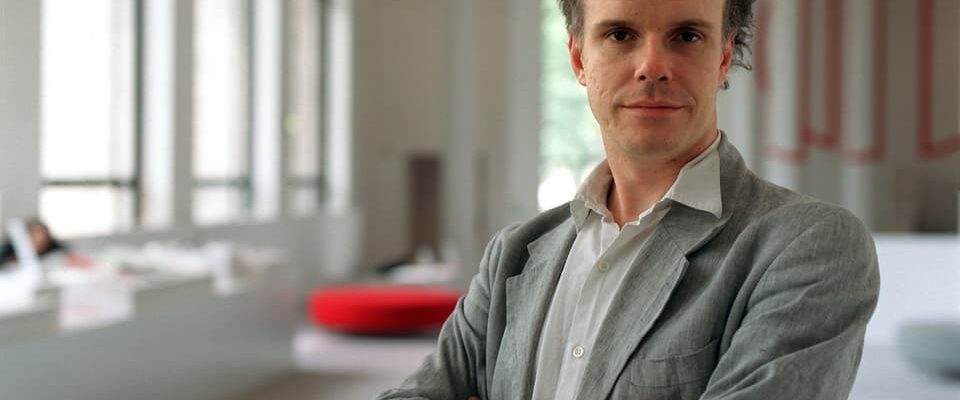Contents
The Swiss star curator presents his memoirs. A breathless report on his career – with a constant shower of prominent names.
The title sets the direction: “A life in progress”: That sounds like “work in progress”, a work that is not yet finished. Of course: Obrist is 55, there is still a lot to come. With “work in progress” the idea of a creative work also comes to mind. The curator as a work of art? A thought that is certainly not entirely foreign to Hans Ulrich Obrist.
His book begins with the words: “May 1968. I was born in this month. Coming into the world in such a symbolic month is the first milestone in my life, perhaps even a sign.”
This introduction makes it clear: false modesty is not his thing. The following 240 pages confirm this impression. Colonel celebrates Colonel. And at a breathless pace. Even reading it sometimes leaves you breathless.
From small town boy to cosmopolitan
The Obrist story begins in Weinfelden on Lake Constance. The mother is a primary school teacher. The father is an auditor. You live well, but modestly. Culture is not on the menu for the Obrist family. A bit of mysticism, though.
Mother Obrist buys Aion A, a preparation that the artist Emma Kunz claims to have discovered as a cure. She gives it to her plants – and her son. The son later particularly remembers the packaging, which featured a drawing by Emma Kunz.
Legend:
The still young colonel proudly presented himself in the Musee d’Art moderne in 2003. He has worked as a curator at the Paris museum since 1993.
KEYSTONE/Martin Ruetschi
The young colonel is not only enthusiastic about art. Also for languages. He wants to get out into the big world of art and meaning! He is learning English, French, Italian, Spanish, Russian. He wrote his autobiography in French. What does he want to tell us? That he managed to go from a small town boy to a cosmopolitan.
The coffee cure
Obrist became known for his interviews with artists. He started doing this as a high school student. He writes that he lived on night trains between 1987 and 1992 – during the day he traveled to Paris, Vienna or Milan to meet artists in their studios. During this time he decided to sleep less and drink more coffee. Following the example of Balzac, who is said to have drunk 50 cups of coffee a day.
In short chapters, Obrist races through the art world. He begins to hold exhibitions: very small ones in the kitchen and hotel rooms, but also very large ones at festivals and biennales. He meets artists, curators, authors and thinkers everywhere. When you read it, you feel like you are under a gentle, constant rain of prominent names.
Moments of speechlessness
The art is neglected. Obrist emphasizes several times that for him art is healing and hope. So something higher, quasi-religious. He mentions conversations, thoughts, concepts: art and globalization. Art and audience. Art and ecology. But: Everything is dealt with relatively quickly. Obrist is always in a hurry. There are many other possible important contacts and projects waiting.
When Obrist does take a little breather, it sometimes becomes extremely amusing. For example, when he talks about his visit to Hans Georg Gadamer. The philosopher was 99 years old at the time and fell asleep during the conversation.
Obrist was perplexed and confused. A telephone ringing woke up Gadamer, who dealt with the caller briefly and then said to Obrist: “It will be very difficult for you to create a transcription of my silence.”
Radio SRF 2 Culture, cultural news, March 25, 2023, 5:10 p.m.
